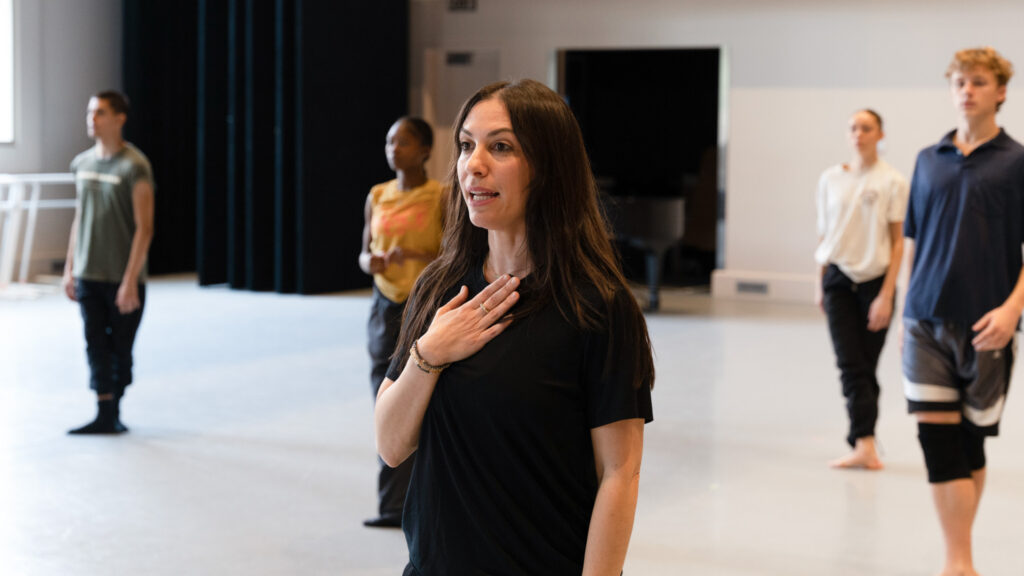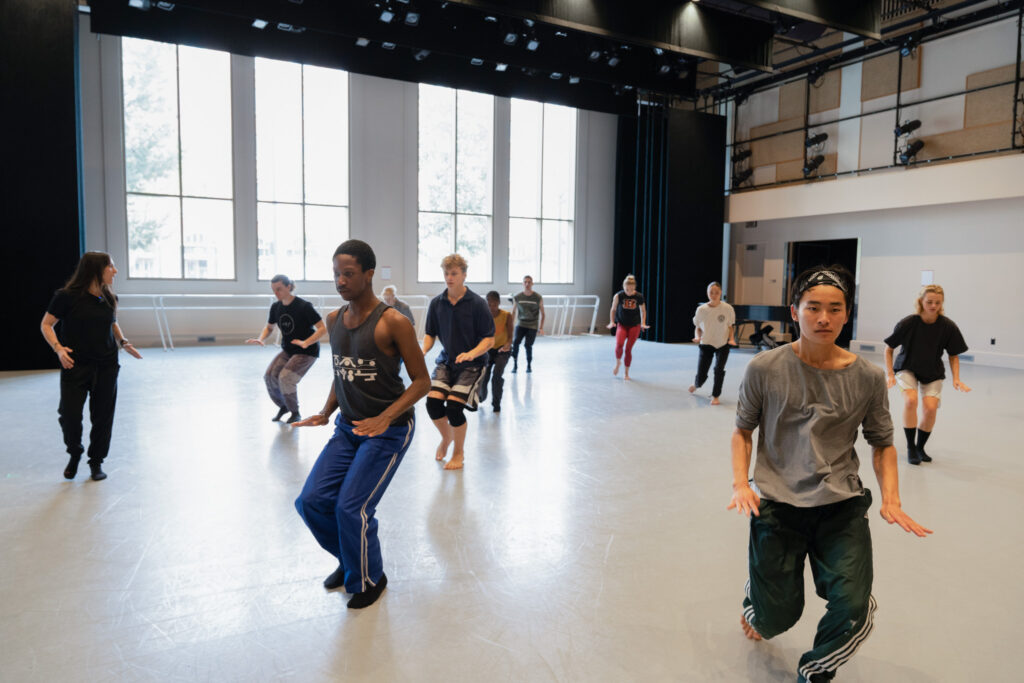Inside the Studio with BodyTraffic’s Tina Finkelman Berkett
February 23, 2024

Tina Finkelman Burkett, founder and artistic director of the LA-based contemporary dance company BodyTraffic
It was an afternoon of positivity, good humor and a challenging piece of repertoire for the 2024 cohort.
Last Friday, USC Kaufman added another prominent name to its list of guest teaching artists, as BodyTraffic founder and artistic director Tina Finkelman Berkett arrived at the studios of the Glorya Kaufman International Dance Center for a masterclass with members of the Class of 2024.
Organized and spearheaded by the USC Kaufman Career Services team, Berkett’s guesting was a chance for BFA students to work with an audacious national figure whose vision has accelerated the reach of contemporary dance in neighborhoods throughout Los Angeles since her company arrived on the West Coast more than 15 years ago.

A native of New York City, Berkett graduated summa cum laude from Barnard College at Columbia University with a double major in Mathematics and Economics. She ultimately decided to pursue a performance career with Aszure Barton & Artists, founded by the acclaimed choreographer Aszure Barton, and danced as a featured artist of the company before later becoming Barton’s assistant. She went on to play a pivotal role as a founding member of Mikhail Baryshnikov’s Hell’s Kitchen Dance and toured internationally alongside Baryshnikov himself.
Berkett relocated to Los Angeles in 2007 and founded BodyTraffic, known among the LA art scene for its contributions to contemporary dance and dance education. The company has earned wide acclaim, thanks partly to an impressive roster of commissioned works by notable choreographers and national tours that have garnered positive reviews for integrating techniques ranging from ballet to modern to hip-hop.
Berkett’s afternoon on campus with USC Kaufman BFA students began with a free-form exercise, much like a game of musical chairs. Students wandered the studio in ostensibly random walking patterns until Berkett called on them to stop and follow through on a prompt.
“I want to know all of you,” she began, “when we walk by each other, let’s share something about our day. Share what you had for breakfast!
“All right, stop with somebody else,” she continued. “What are we going to talk about next? What are you doing this weekend?”
As the warmup ended, Berkett took to the center of the floor to demonstrate an excerpt of choreography from the BodyTraffic repertoire. Punctuated by a seemingly incongruent action of cutting hand gestures and a suppleness of the upper torso that Berkett described as “flowing water falling,” BFA students jumped into the action. What began slowly moved progressively quicker, a simultaneous test of endurance and skill that was met with occasional humor, thanks in part to Berkett’s easy manner. She later asked dancers to break down the choreography in small groups before presenting the final phrase at full speed at the end of class.
Characteristically, she encouraged them to go beyond the scope of what they believed they were capable of doing.
“You can go faster,” she said of the students. “Why not, yeah? Push yourselves!”